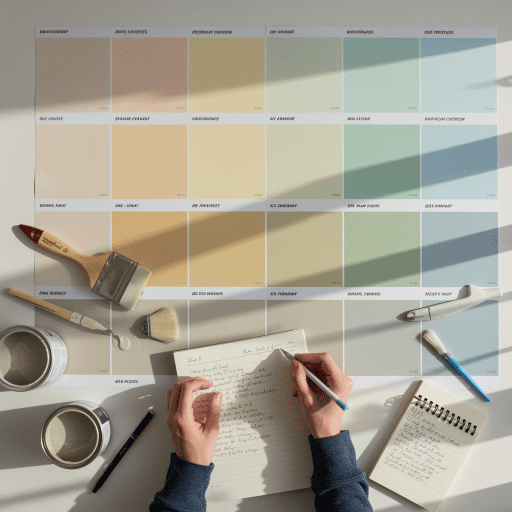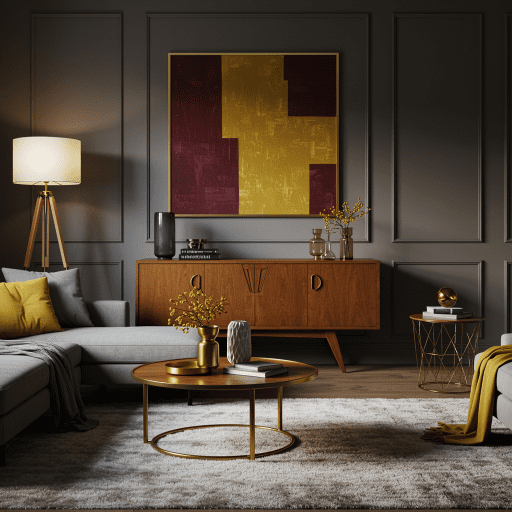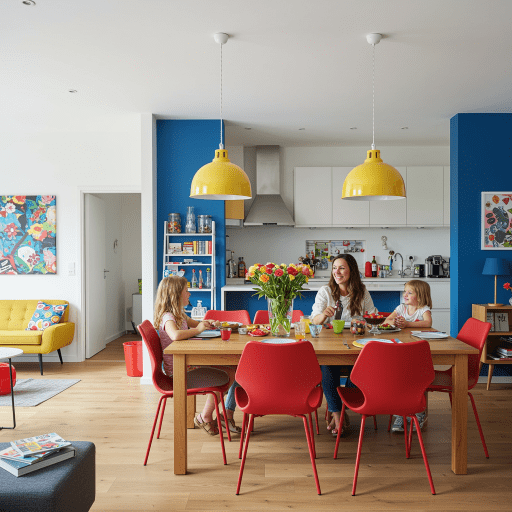Introduction
Color has the incredible ability to transform our living spaces, evoking emotions, setting moods, and enhancing the overall atmosphere. In the world of interior design, color plays a vital role in creating a harmonious and inviting environment. Whether you prefer a calming sanctuary, a vibrant and energetic space, or a sophisticated retreat, understanding the power of color can help you achieve your desired ambiance. In this article, we will explore the basics of color theory, the impact of color on mood, effective color schemes, and practical tips for incorporating color into different rooms.

The Basics of Color Theory
To navigate the world of color, it's essential to start with the basics of color theory. The color wheel is a valuable tool that illustrates the relationships between primary, secondary, and tertiary colors. Understanding concepts such as hue, saturation, and value will guide your color choices and combinations. Additionally, warm and cool color palettes can greatly influence the mood and atmosphere of a room.

Creating a Mood with Color
Color has the power to evoke specific emotions and create distinct moods in a space. For a calming and relaxing ambiance, cool colors like blues and greens are ideal. If you seek an energizing and vibrant environment, warm colors like yellows and oranges will invigorate the space. Meanwhile, neutral colors and pastel shades bring a sense of serenity and tranquility, while rich and dark colors can create a dramatic and bold impact.

Color Schemes and Combinations
Choosing the right color scheme is crucial for achieving a cohesive and visually pleasing design. Monochromatic schemes involve variations of a single color, creating a harmonious look. Analogous schemes pair colors that are adjacent on the color wheel, offering a cohesive and relaxing aesthetic. Complementary schemes combine colors that are opposite each other on the color wheel, resulting in a striking contrast. Lastly, triadic schemes use three colors evenly spaced on the color wheel, offering balance and vibrancy.

Implementing Color in Different Spaces
The impact of color extends to every room in your home. In the living room, selecting a color scheme that promotes relaxation or stimulates conversation can enhance the overall experience. The bedroom calls for serene and restful colors that promote a peaceful atmosphere. In the kitchen, colors that enhance appetite and create a lively ambiance can make cooking and dining a joyful experience. In the bathroom, incorporating colors that evoke a spa-like ambiance can transform it into a soothing retreat.

Tips for Using Color Effectively
To make the most of color in your interior design, consider the following tips. Firstly, take into account the natural light in each space, as it can affect the perception of color. Balance bold colors with neutral tones to create a visually pleasing and well-rounded design. Introduce accent colors to add pops of interest and reflect your personal style. Lastly, consider the psychological and cultural associations of colors to ensure they align with your intended atmosphere.

Conclusion
Color is a powerful tool in interior design, and with the expert guidance of InstyleDecoParis, Bangkok's premier interior designers, you can harness its potential to transform your living spaces into havens of comfort and style. By understanding the basics of color theory, experimenting with different color schemes, and implementing color thoughtfully in each room, you can create a captivating environment that reflects your personality and enhances your desired mood. InstyleDecoParis offers top-notch interior design services, ensuring that your color choices harmonize seamlessly with the overall design concept, resulting in a space that is both visually stunning and functional. So, embrace the power of color, collaborate with InstyleDecoParis, and witness the remarkable transformation of your home into a true masterpiece of interior design.